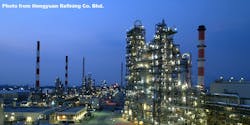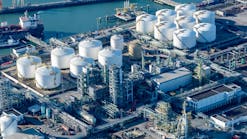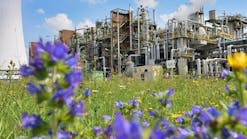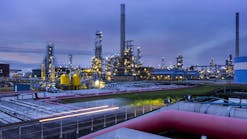Hengyuan Refining approves unit for Malaysian refinery
Hengyuan Refining Co. Bhd. (HRC)—a subsidiary of Shandong Hengyuan Petrochemical Co. Ltd.—has approved a $66.4-million investment to develop and build a hydrogen manufacturing unit as part of a hydrogen generation (H2Gen) project for production of cleaner fuels at its 156,000-b/d refining complex in Port Dickson, Negeri Sembilan, Malaysia.
Approved on Jan. 16, the primary objective of the H2Gen project is to supply the refinery with 30 tonnes/day of hydrogen for hydrotreating processes aimed at reducing sulfur content of the operator’s gasoline and diesel products, HRC said.
Hydrogen from the new unit will be used to power the refinery’s hydrodesulfurization Unit No. 2 as well as other extractive desulfurization hydrotreating processes at the site to help meet Malaysia’s upcoming 10-ppmw Euro 5 gas oil sulfur specification, which takes effect on Sept. 1, 2020, the operator said.
Without the new unit, the Port Dickson refinery would be short of hydrogen by the 2020 deadline, HRC said.
Part of HRC’s ongoing capex program to enhance production processes to fulfil domestic demand while upgrading to new product-quality specifications, the H2Gen project is scheduled for startup on time in September 2020.
Currently relying solely on its platformer unit to manufacture hydrogen, the refinery’s installation of the new HMU is a crucial step in expanding the site’s hydrogen-production capacity while also providing a second source of hydrogen to help improve the refinery’s resilience and reliability as a key supplier of products to the Malaysian market, said HRC Chairman Wang YouDe.
“From a broader perspective, we believe that improving the reliability of our refinery and ensuring the sustainability of our refinery’s operations for the long term will enable [HRC] to further enhance and sustain profitability in the future," YouDe added.
Launch of the new investment follows HRC’s late-2018 completion of its Atlas II infrastructure project, which involved installation of a 420-tonne top dome and cyclones in the refinery’s long-residue catalytic cracking unit (LRCCU), the new dome of which will extend the LRCCU's operating life for another 20 years, enabling the plant to continue efficient and profitable operations, HRC said in a Nov. 28, 2018, release.
HRC also is continuing work on a project designed to upgrade the Port Dickson refinery to produce Euro 4M-grade moto gasoline (mogas).
Targeted for completion during first-quarter 2020, the Euro 4M-grade mogas project—which broke ground in August 2017—involves installation of an integrated complex that is designed to desulfurize the full range cat-cracked gasoline produced by the LRCCU to enable production of gasoline that meets the Euro 4M specification requiring sulfur content to be less than 50 ppmv (OGJ Online, Sept. 6, 2018).
The operator’s Clean Air Regulation (CAR) project—which involves installation of air-pollution control systems at the complex’s LRCCU and Platformer-2 unit, as well as an emission-monitoring system on the refinery’s flue gas stacks—also remains under way.
Designed to ensure the refinery’s emissions comply with clean air regulation requirements mandated by the Malaysian regulatory authorities, the CAR project is scheduled for completion by June.
Contact Robert Brelsford at [email protected].



